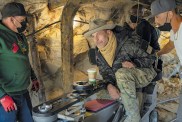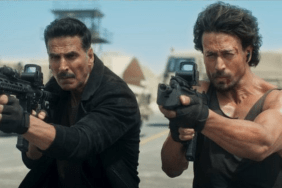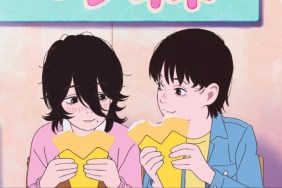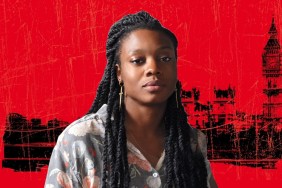
Starring:
Cillian Murphy as Jim
Naomie Harris as Selena
Megan Burns as Hannah
Brendan Gleeson as Frank
Christopher Eccleston as Maj. Henry West
Noah Huntley as Mark
Stuart McQuarrie as Sgt. Farrell
Ricci Harnett as Cpl. Mitchell
Leo Bill as Pvt. Jones
Junior Laniyan as Pvt. Bell
Ray Panthaki as Pvt. Bedford
Sanjay Ramburuth as Pvt. Davis
Marvin Campbell as Pvt. Mailer
Story:
In the latest film from “Trainspotting” director Danny Boyle, a London bicycle courier (Murphy) wakes up from a coma to find London abandoned except for hordes of homicidal mutated humans infected by a virus called Rage. As he tries to escape from them, he comes in contact with three other survivors and the four of them head off into the country in an old taxi cab to try to find survivors, only to discover something much worse.
What Worked:
Though “28 Days Later” is not the first post-apocalyptic movie about a virus outbreak, the premise is more apropos than, considering the recent SARSscare. The virus and its effects on society are handled rather intelligently throughout the movie, which makes the movie even scarier. The virus is transmitted via blood and saliva much like AIDS, except that it acts a lot faster, infecting and turning the recipient violent within seconds. The opening scenes of a testing lab raid gone wrong and then Jim’s first foray into an abandoned London sets up the rest of the movie for the horrors to come.
The movie pays homage to zombie and invasion movies such as “Dawn of the Dead” and “Day of the Triffids” as well as “last man on earth” movies like “Omega Man”, but Boyle takes a more original tact. The movie is particularly jarring in the realism of the violent situations. Like the best horror movies, the attacks by the savage infected mutations are sudden, often breaking a quiet moment of reflection and creating overwhelming tension and suspense as one never knows when the “infected” will attack again. The entire movie is riveting from beginning to end never letting go of your attention thanks to Boyle’s brilliant pacing which makes sure you never know what will happen next. The final sequences will keep you on the edge of your seat.
“28 Days Later” is a visually stunning movie from beginning to end, especially when showing the stark grey abandoned London and the idyllic British countryside. The former creates one of the eeriest scenes I’ve seen in a recent movie, when one realizes that Boyle actually had to vacate sections of London to pull it off. It’s reminiscent of the opening Times Square sequence in Cameron Crowe’s “Vanilla Sky”, but to a much greater degree.
With a cast of relative unknowns stateside–the main exception being the always excellent Brendan Gleeson–the performances are terrific all around, with the actors being forced to portray a wide range of emotions from fear to anger to doubt. Cillian Murphy is a superb find, much like Ewan McGregor, and he gives a breakout performance as a man torn apart by the new world into which he’s awaken. Naomie Harris also does a great job as a spunky”zombie-fighter” doing whatever she can to survive.
Although “28 Days Later” is intended to be a horror movie, the violence is mixed with human drama that shows the implications of a large-scale outbreak and how it affects the actions of the remaining humans. The script is excellent and the way that the characters justify their actions as they interact helps the movie to work on more levels than your typical zombie movie.
As was the case with “Trainspotting”, the soundtrack plays a key part of the cinematic experience from eerie ambient background music to somber Brit pop, it creates exactly the right mood at the right moment.
What Didn’t Work:
As would be expected from a zombie movie, there is an excessive amount of blood and gore throughout the movie. This is not the cartoon-like violence that one sees in movies such as “Resident Evil”. It’s sudden and graphic and hard to watch. Those who are squeamish will probably want to pass on the movie despite its social relevance, because it’s hard to stomach some of the more graphic scenes.
What makes the violence even more disturbing is the jarring editing and camera work, which tends to make it difficult to discern exactly what is happening during the action sequences. Since the mutants tend to stay in the dark, the lack of lighting makes it even harder to follow. In some ways, the camera work makes the creatures look like something out of the horror movie, “13 Ghosts”, which in itself was a modern remake of a horror classic. Considering Boyle’s pedigree, I expect more original and unique cinema techniques then these standard camera tricks, many of them used to cover upsloppy camera work.
One could probably say that the movie is a bit too British. One has to wonder if anyone in middle America will understand all of the British slang and humor, not to mention appreciate the stunning vision of some of the British landmarks vacant of human life.
There are also a few weak plot points, which make the suspension of disbelief harder to justify, but then one realizes that this is essentially a zombie movie.
Bottom Line:
Paying homage to the horror movies of the past while creating a modern-day drama steeped in realism, Boyle has created something truly unique. “28 Days Later” is a thought-provoking movie, which shows what mankind might do if pushed to its very limits and how far one might go when put to the test of whether to kill or be killed. Since Boyle does this by using some rather standard modern horror techniques, educated people who might get the most out of the movie’s thought-provoking premise might avoid it like the plague, but true horror fans should eat it up.
“28 Days Later” opens in select cities on June 27th.










